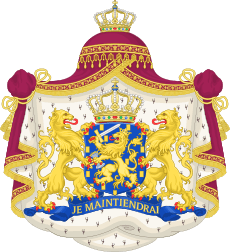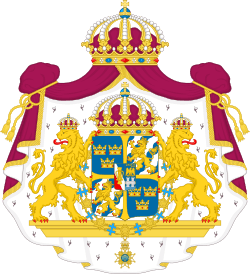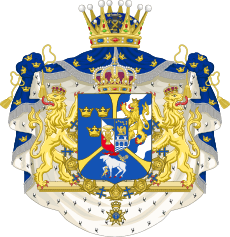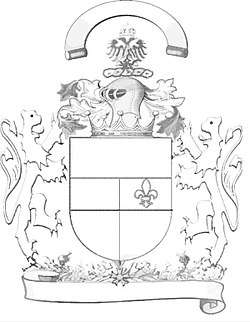Mantle and pavilion (heraldry)

The arms of the Dutch monarch feature a pavilion and mantle
In heraldry, the mantle is a symbol of sovereign power and is generally reserved for royalty. In some cases its use has also been granted to other nobles, in recognition of particular merits. In ordinary rendering the mantle is usually crimson and lined with ermine. Certain arms may also display a pavilion surmounting the mantle.
The pavilion is said to be the invention of the Frenchman Philip Moreau.[1]
While common in continental European heraldry, the mantle and pavilion is absent in British heraldry.[2]
Gallery
 Mantle and pavilion
Mantle and pavilion Greater coat of arms of Sweden, features a purple mantle but with no pavilion
Greater coat of arms of Sweden, features a purple mantle but with no pavilion King Carl XVI Gustaf's coat of arms as crown prince of Sweden, blue mantle reflecting the physical Swedish princely mantles which are also blue
King Carl XVI Gustaf's coat of arms as crown prince of Sweden, blue mantle reflecting the physical Swedish princely mantles which are also blue
References
See also
| Wikimedia Commons has media related to Heraldic mantling. |
This article is issued from
Wikipedia.
The text is licensed under Creative Commons - Attribution - Sharealike.
Additional terms may apply for the media files.
